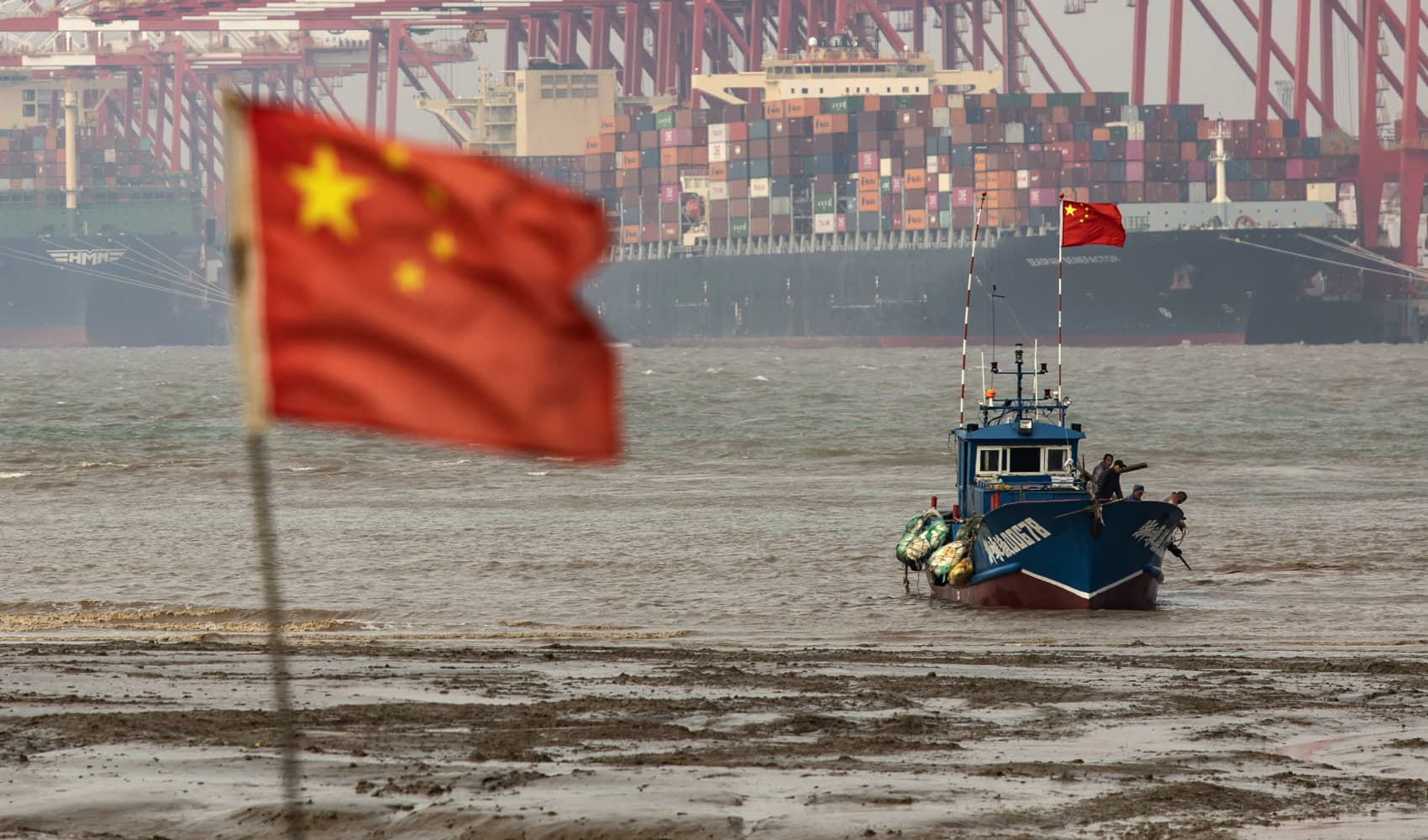Asia Trade Relief: Markets Surge on US-China Thaw Signs
Asia-Pacific Markets Surge on Hints of U.S.-China Trade Relief
Introduction: A Breath of Fresh Air in Asian Markets
Have you ever felt that collective sigh of relief when dark clouds finally part and the sun peeks through? That's precisely what's happening in Asia-Pacific markets right now. After navigating a turbulent period marked by trade tensions and economic uncertainty, investors are cautiously optimistic as they assess a possible thaw in the U.S.-China trade relationship. The scent of progress is in the air, and it's fueling a rally across several key Asian exchanges. Let's dive into the details of what's driving this positive sentiment and what it could mean for the global economy.
Wall Street's Tailwind and Asia's Ascent
The positive momentum in Asia-Pacific markets isn't happening in a vacuum. It's being propelled, in part, by a three-day winning streak on Wall Street. Tech stocks, in particular, have been leading the charge, signaling a broader risk-on appetite among investors. Think of Wall Street as the engine, and Asia as the carriage – when the engine revs up, the carriage tends to follow.
Tech's Leading Role
Why is tech so important? Because it's a bellwether for economic growth and innovation. When tech stocks are thriving, it suggests that investors are confident in the future, and that confidence can ripple through other sectors and geographies.
China's Potential Tariff Suspension: A Game Changer?
The real catalyst for this surge of optimism stems from reports that China is considering suspending its 125% tariff on certain U.S. goods, as reported by Bloomberg. This is a big deal. Why? Imagine you're trying to negotiate a peace treaty. Removing trade barriers is like extending an olive branch – it signals a willingness to compromise and de-escalate tensions.
Breaking Down the 125% Tariff
125% might sound like an arbitrary number, but it represents a significant financial burden on U.S. exporters. Slashing or eliminating these tariffs could significantly improve the competitiveness of U.S. goods in the Chinese market, potentially boosting U.S. exports and reducing trade imbalances.
Hong Kong's Hang Seng: A Measured Gain
Hong Kong's Hang Seng Index closed 0.24% higher at 21,963.09. While not a massive jump, it's still a positive sign. Remember, Hong Kong is a vital gateway for trade and investment between China and the rest of the world. Any positive news regarding U.S.-China relations tends to be reflected in its market performance.
Mainland China's CSI 300: Holding Steady
Mainland China's CSI 300 traded flat, closing at 3,786.99. This could indicate some hesitancy or caution among investors, despite the positive news flow. After all, market participants are likely waiting to see concrete action and further confirmation of a sustained thaw in trade relations. It's like waiting for the other shoe to drop – are these just rumors, or will they materialize into real policy changes?
Japan's Nikkei 225: Soaring High
Japan's Nikkei 225 delivered a strong performance, rising 1.9% to close at 35,705.74. This is one of the strongest performances in the region. Why such a robust rally in Japan? A weaker yen, coupled with the improved global outlook, is likely contributing to the Nikkei's surge. A weaker yen makes Japanese exports more competitive, benefiting its export-oriented economy.
Topix: Riding the Nikkei's Wave
The Topix also followed suit, adding 1.37% to end the trading day at 2,628.03, reflecting the overall positive sentiment in the Japanese market.
South Korea's Kospi: Climbing Up
South Korea's Kospi climbed 0.95% to close at 2,546.3. Like Japan, South Korea is heavily reliant on exports, making it sensitive to global trade dynamics. The potential easing of trade tensions between the U.S. and China is good news for the South Korean economy.
Kosdaq: Small Caps Join the Party
The small-cap Kosdaq rose 0.5% to close at 729.69, suggesting that the positive sentiment is spreading beyond the large-cap companies.
South Korea and the U.S.: Inching Closer to a Trade Deal
Adding to the positive atmosphere, reports suggest that South Korea is also nearing a trade deal with the U.S. This could further bolster the South Korean economy and improve its trade relationship with one of its key trading partners.
Australia: Taking a Break
Australian markets were closed for a holiday, meaning no immediate reaction to the news. We'll have to wait and see how the Australian market responds when it reopens.
The Significance of Trade Talks and What's at Stake
The U.S.-China trade war has been a major headwind for the global economy in recent years. It has disrupted supply chains, increased costs for businesses and consumers, and created uncertainty in the markets. A genuine thaw in relations could unlock significant economic potential and alleviate some of these pressures. Think of it like removing a roadblock on a highway – traffic can flow more freely, and everyone benefits.
Potential Benefits of Reduced Trade Tensions
- Reduced inflation for consumers
- Increased profits for businesses
- Improved global economic growth
- Greater stability in financial markets
The Road Ahead: Cautious Optimism
While the recent developments are encouraging, it's important to remain cautiously optimistic. Trade negotiations can be complex and unpredictable. There's always the risk that talks could break down or that new tensions could arise. Investors should carefully monitor the situation and adjust their strategies accordingly.
Future Indicators to Watch
Formal Agreements
Keep an eye out for official announcements from both the U.S. and China confirming the suspension or removal of tariffs. These are the hard facts that will truly move the market.
Economic Data
Look for signs of improved trade flows and economic activity in both countries. Numbers don't lie; they'll reflect the true impact of any trade deal.
Geopolitical Developments
Pay attention to any political events or announcements that could potentially disrupt trade relations. Geopolitics and trade are intertwined, and unexpected events can always throw a wrench into the works.
Conclusion: A Glimmer of Hope, But Prudence is Key
The Asia-Pacific markets are showing signs of life, fueled by optimism surrounding a possible thaw in the U.S.-China trade war. While the positive momentum is encouraging, investors should remain vigilant and assess the situation carefully. The potential suspension of tariffs by China and South Korea inching closer to a trade deal with the U.S. have provided tailwinds. Keep a close watch on formal agreements, economic data, and geopolitical developments, and remember that a balanced approach is always best when navigating the complexities of the global economy.
Frequently Asked Questions (FAQs)
- 1. What does a "thaw" in the U.S.-China trade war mean?
- A thaw signifies a lessening of tensions and a move towards more cooperative trade relations between the U.S. and China. This can involve reducing or eliminating tariffs, increasing trade volume, and engaging in more constructive dialogue.
- 2. Why are tech stocks so important in this market rally?
- Tech stocks are often seen as a leading indicator of economic growth. Strong performance in the tech sector suggests investor confidence in innovation and future earnings, which can then boost broader market sentiment.
- 3. How does the U.S.-China trade war affect everyday consumers?
- The trade war can lead to higher prices for goods and services, as tariffs increase the cost of imported products. This can impact consumers' purchasing power and overall inflation.
- 4. What are the main risks to the current market optimism?
- The main risks include a breakdown in trade negotiations, unexpected geopolitical events, and a resurgence of protectionist policies. These factors could quickly reverse the positive momentum and lead to renewed market volatility.
- 5. What should investors do in response to these market trends?
- Investors should maintain a diversified portfolio and carefully assess their risk tolerance. It's crucial to stay informed about market developments and consult with a financial advisor to make informed investment decisions.





